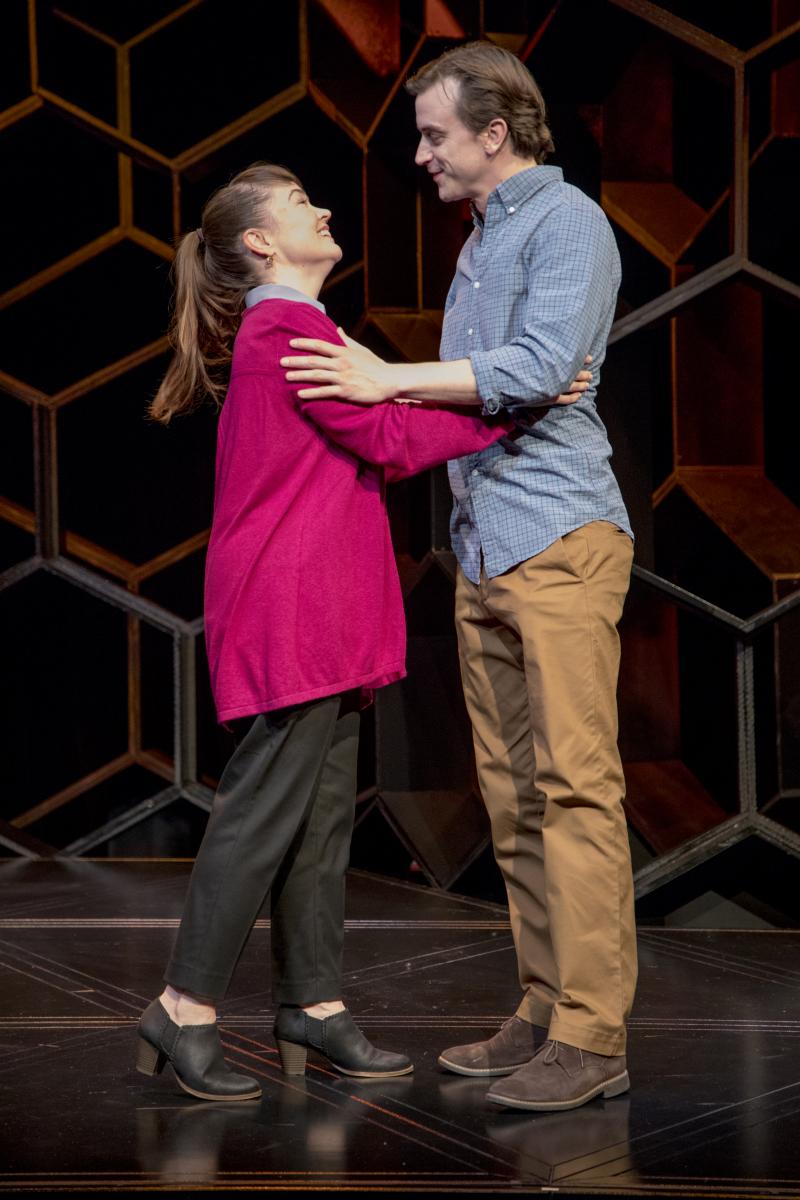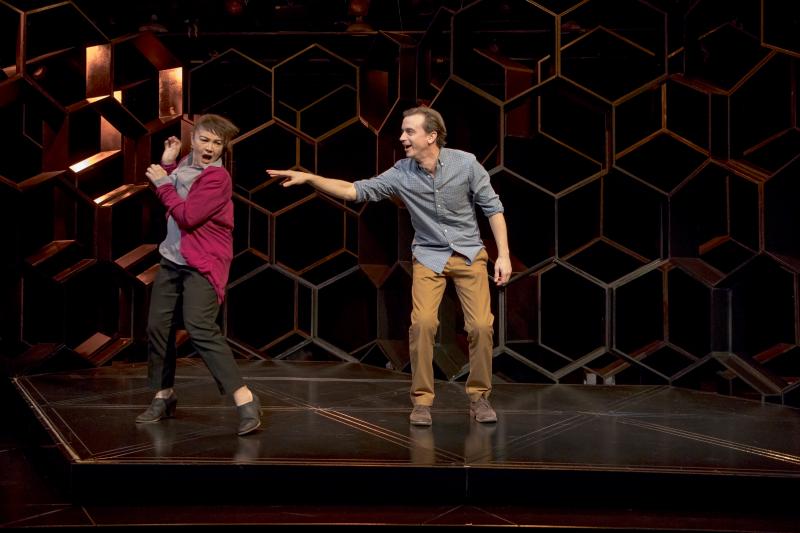Review: CONSTELLATIONS at Hudson Stage Company

"Constellations," the drama by British playwright Nick Payne had a successful Broadway run featuring a star turn by Hollywood hunk Jake Gyllenhall. Gyllenhall brought star power to the production but little else; often looking as confused as the audience in the time and space shifting story. Razor sharp, crystal clear direction is critical in a play that jumps back and for in time and across parallel dimensions. Luckily for Hudson Stage Company, Mark Shanahan's sure hand keeps the action clearly focused as he navigates the multiverse in which a pair of somewhat unsuspecting lovers live, re-live, and re-re-live several key moments in their relationship.
The play is anything but a traditional romantic comedy as the two characters bounce back and forth - first rapidly - then more thoughtfully between parallel fields of existence. It is Rashomon on steroids, where the audience actually sees the various different versions of the same encounters play out over and over in slightly different permutations.

To exacerbate the "randomness" of the encounters, Payne's characters could not come from more different fields of endeavor - Roland, a beekeeper and Marianne, a theoretical astrophysicist from Cambridge University. Nonetheless, the relationship unfolds again and again with the two characters growing closer and closer. At first it almost appears as if the characters themselves are hitting a quantum reset button, allowing unappealing realities to disappear as they try it again.
But when Marianne explains to Roland, (in a rather pedantic manner) that "In the quantum multiverse, every choice, every decision you've ever and never made exists in an unimaginably vast ensemble of parallel universes," it's clear greater forces are at work. On its face, the statement seems like a buzz-kill for a potentially romantic encounter, but it serves a purpose, revealing how their relationship can exist at the same time in different levels of intimacy, in different dimensions.
The play covers several major live events: their first meeting - highlighted by decreasing levels of awkwardness and insecurity. Next the subject of infidelity is covered, in which both characters are alternately the cheater and the cheatee and the audience is never fully aware who is the aggrieved party - or if it's not both of them. Still they manage to persevere through the multiple challenges in the multiple universes. The final event is brilliantly foreshadowed throughout the play and when it is finally revealed (no spoilers here) the effect is devastating.
The real beauty of the play is that despite its highly unique and untraditional structure and story line (one in which it could be very easy to lose track of the line and by extension, lose concern for the characters) by the last sequence of scenes, we are completely enveloped in Roland and Marianne's story and we can't help rooting for them.
This style of storytelling makes emotional connection with the characters much more difficult than in a traditional narrative structure, but in the hands of this director and this cast, it is well worth the work. The cast is exceptional. Ben Paul Williams was delightful and disarming with his initial aw-shucks charm, which matured and metamorphosized into a richly complex characterization of the beekeeper. Faith Sandberg brought a depth to Marianne beyond what the playwright put on the page. Marianne begins the play as the unlikely astrophysicist with "f-ing" as the only adjective in her lexicon but Sandberg makes her less cerebral and more emotionally accessible as the play moves forward.

James J. Fenton's set was absolutely brilliant. In a small piece of theatrical genius, he managed to take the two (seemingly) vastly disparate worlds of the characters and found the little-known common denominator between them: the honeycomb of the beekeeper and the honeycomb lattice of theoretical quantum physics. It provided a backdrop that was theoretical, abstract, and spot on at the same time.
Andrew Moser's lighting design was serviceable but given experimental nature of the story structure and the copious amount of surface area created by Fenton's set, it felt like a grand opportunity for really dazzling lighting was missed.
The show's final scene cleverly manages to put together elements from all the multiple universes covered in the previous 75 minutes into one tidy exchange - which you will either find absolutely brilliant, or just a bit too convenient, depending upon your own willingness to suspend disbelief. Either way, we leave certain that in at least one universe, Marianne and Roland might just have a chance for a bright future together. Hudson Stage Company's 20th Season has opened with bang - a big bang! (sorry couldn't resist!)
-Peter Danish
Videos
